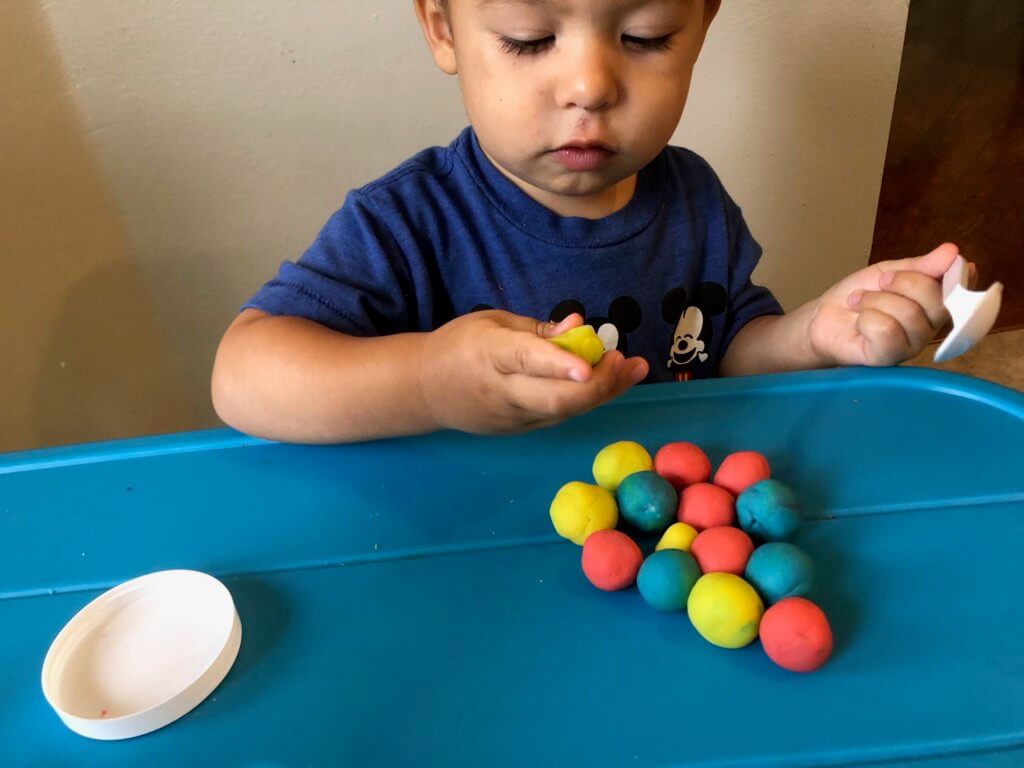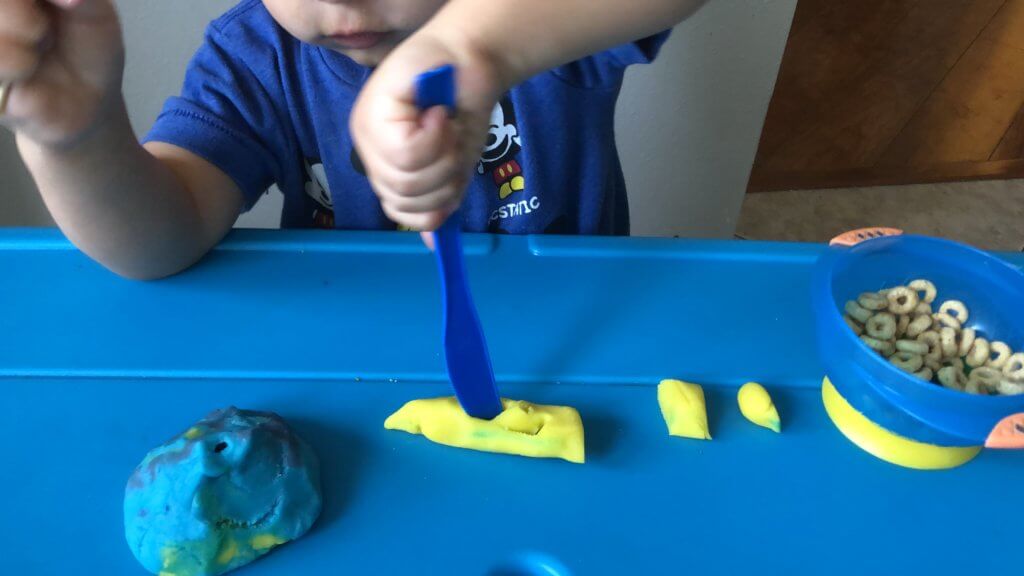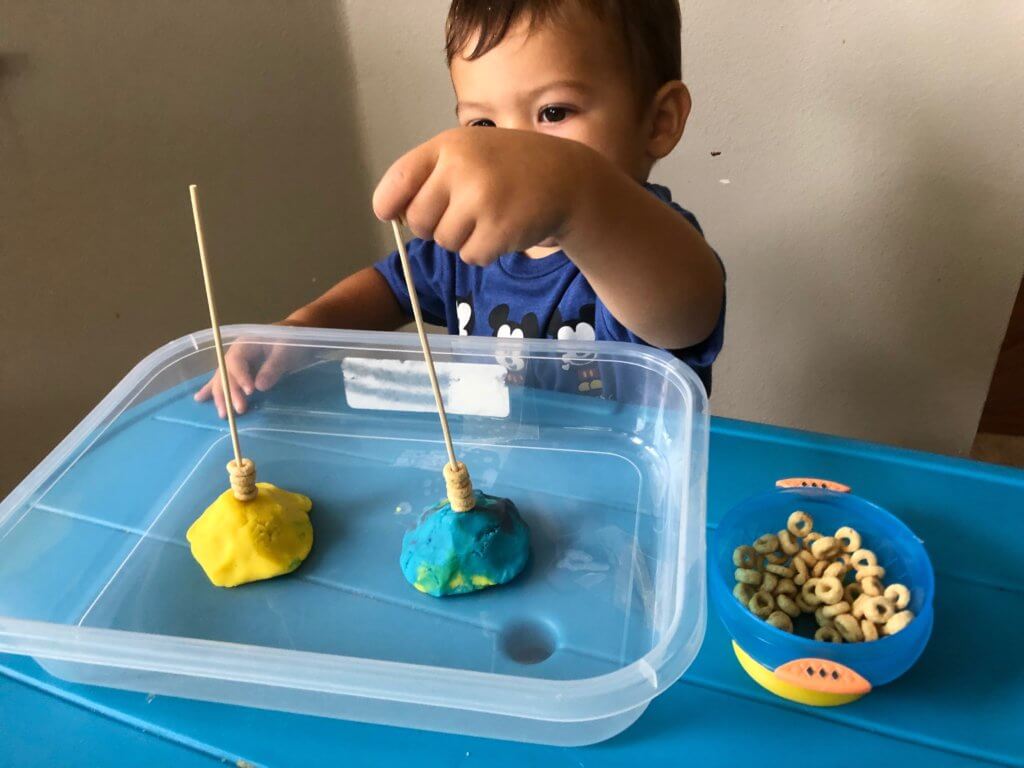Playdough (or brand name Play-Doh) is a new texture to many toddlers, so playing with this might not come naturally as one might think. Manny, who loves to get messy, was not a fan of touching the playdough at first. Here is how we introduced this fun tool.
Playdough is recommended for kids older than two years old; before then, toddlers tend to put everything in their mouth, and although playdough is toxic-free, it should not be consumed.
One-year-olds might not have the fine motor skills developed yet to use playdough or the creative mind developed to pretend play. But! There are still lots of things you can do with playdough! I’ll show you!
Work on fine Motor Skills using Playdough
I started making balls for him and showing him how to squish them with my finger. I invited him to do it, but he was not amused. He was more interested in lining them up next to each other – and that was fun – he was playing in his own way.

Making smaller balls and asking your tabby to place each one inside an ice cube tray. One ball per space is a pre-math skill. Maybe I’ll try to do that next time we play.
What can toddlers learn from playdough?
Playdough is used to develop fine motor skills. Many occupational therapies rely on this material in their practice.
Practice Colors
As part of our pre-K readiness Level 1 program I developed, we are only focusing on primary colors. Red, yellow, blue, and in some cases green. This is why we only made these three colors.
As we played with the playdough, I focused on repeating the name of the color playdough we were using. If I made a yellow ball and I would say “yellow” when handed him the ball. When he placed it at the desired place he wanted, I would say “yellow” again.
Use props to play
We haven’t bought a set of playdough tools so we improvised by using a plastic, fork, knife spoon. I made a snake and using a no sharp knife worked on cutting the snake into pieces.
Because my son is still starting to learn how to properly use utensil, practicing with playdough is a great activity to practice.
He is used to eating with a fork, so his immediate reaction was to poke the playdough with the knife.

How to be successful
When playing with playdough for the first time, you have to show your toddler how to manipulate it, what it can do, and how to play with it. Once they get comfortable with it, it can become an independent game.
You can start with simple activities and inviting your toddler to play. “look how I make a ball, can you squeeze it? How does it feel?” Add lots of conversation and questions to this activity.
Use Playdough for learning other concepts
Use playdough mats (there are so many online to download) to teach and practice pre-k subjects. You can work on the numbers, colors, and ABC’s.
You can even add to the challenge of this fun too and create games using playdough, cheerios, and a stick. Can your toddler thread the cheerios through the sticks?
Manny had a hard time at first, so I know that this is an activity we should practice more as he gets older. (Update: at 2 years old, he was able to accomplish this!)

The possibilities are endless and just like legos, this tool is actually a learning tool that is important for toddlers to use. Making your own playdough is easy and you can use it to practice so many pre-k readiness subjects.
Get tons of creative ideas to do with your toddler at home! Become a PLAY MEMBER by signing up for the newsletter.
Play members get seasonal activity ideas right in their inbox, a special invitation to our Mommy & Me Virtual Circle time, and access to our free library with educational printables and activities to develop your child through sensory play and reach their developmental milestones while getting a head start when entering Pre-K.
